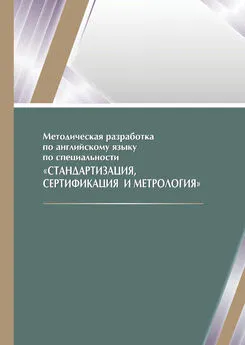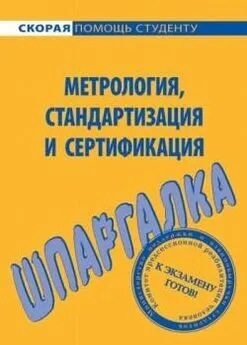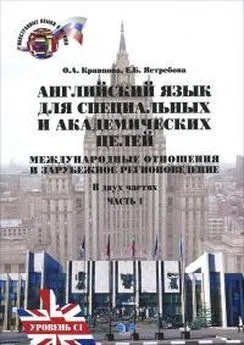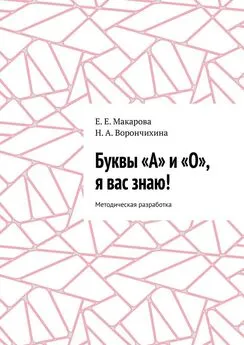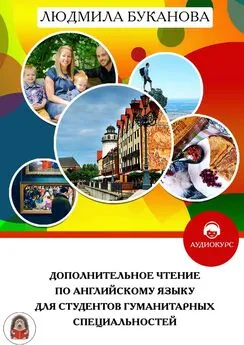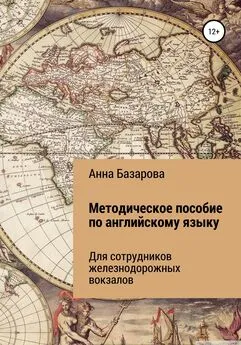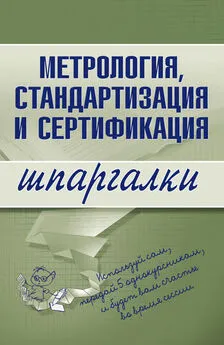Джамиля Махметова - Методическая разработка по английскому языку по специальности «Стандартизация, сертификация и метрология»
- Название:Методическая разработка по английскому языку по специальности «Стандартизация, сертификация и метрология»
- Автор:
- Жанр:
- Издательство:Казахский национальный университет имени аль-Фараби Литагент
- Год:неизвестен
- ISBN:978-601-04-1455-6
- Рейтинг:
- Избранное:Добавить в избранное
-
Отзывы:
-
Ваша оценка:
Джамиля Махметова - Методическая разработка по английскому языку по специальности «Стандартизация, сертификация и метрология» краткое содержание
The present teaching manual is designed for bachelor's and master's degree training on specialty «Standardization, Certification and Metrology».
When choosing the authentic texts on the subject a glossary of terms was used that contributes to enriching the vocabulary of the most important aspects of the field, as well as checking up habits and skills of the material studied within a definite period of time.
Методическая разработка по английскому языку по специальности «Стандартизация, сертификация и метрология» - читать онлайн бесплатно ознакомительный отрывок
Интервал:
Закладка:
master standard – основной стандарт – негізгі стандарт
fundamental – основной – негізгі, ең бастапқы
technique – метод – техника, әдіс
to disrupt – разрушать, подрывать, искажать – қирату, талқандау, бұзу
Ex.1 read and translate the text
What is standard?

In the science of measurement,a standard is an object,system, or experiment that bears a defined relationship to a unit of measurement of a physical quantity. Standards are the fundamental reference for a sy stem of weights and measures, against which all other measuring devices are compared. Historical standards for length, volume, and mass were defined by many different authorities, which resulted in confusion and inaccuracy of measurements. Modern measurements are defined in relationship to internationally- standardized reference objects, which are used under carefully controlled laboratory conditions to define the units of length, mass, electrical potential, and other physical quantities.
There is a three-level hierarchy of physical measurement standards. At the top of the tree are the master standards – these are known as primary standards. Primary standards are made to the highest metrological quality and are the realizationof their unit of measure. Historically, units of measure were generally defined with reference to unique artifacts which were the legal basis of units of measure. A continuing trend in metrology is to eliminate as many as possible of the artifact standards and instead define practical units of measure in terms o f fundamental physical constants,as demonstrated by standardized technique. One advantage of elimination of artifact standards is that intercomparison of artifacts is no longer required. Another advantage would be that the loss or damage of the artifact standards would not disrupt the system of measures.
The next quality standard in the hierarchy is known as a secondary standard. Secondary standards are calibrated with reference to a primary standard.
The third level of standard, a standard which is periodically calibrated against a secondary standard, is known as a working standard. Working standards are used for the calibration of commercial and industrial measurement equipment.
Primary reference standards
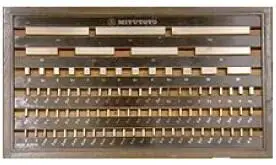
Gauge blocksare used as a wo rking standard to check the calibration of measurement tools such as micrometers.
An example of a primary standard is the international prototype kilogram(IPK) which is the master kilogramand the primary mass standard for the International System of Units(SI). The IPK is a one kilogram mass of a platinum-iridium alloymaintained by the International Bureau of Weights and Measuresin France.
Another example is the unit of electrical potential, the volt.Formerly it was defined in terms of standard cellelectrochemical batteries, which limited the stability and precision of the definition. Currently the volt is defined in terms of the output of a Josephson junction,which bears a direct relationship to fundamental physical constants.
In contrast, the reference standard for the meteris no longer defined by a physical object. In 1983, the standard meter was redefined as the distance which light travelsin a vacuum during 1/299,792,458 of a second.
Secondary reference standards
Secondary reference standards are very close approximations of primary reference standards. For example, major national measuring laboratories such as the US's National Institute of Standards and Technology (NIST)will hold a national standard kilogram, which is periodically calibrated against the IPK.
Working standards
Although the SI definition of the «meter»is based on a laboratory procedure combining the speed of light and the duration of a second, a machine shop will have a physical working standard (gauge blocksfor example) that is used for checking its measuring instruments. Working standards and certified reference materialsused in commerce and industry have a traceable relationship to the secondary and primary standards.
Ex. 2. Answer the following questions
1. What is standard?
2. What types of standard do you know?
3. What is working standard?
4. What is the advantage of the elimination of artifacts?
5. What is IPK?
Ex. 3. Are these sentences true or false?
1. Gauge blocksare used as a wo rking standard to check the calibration of measurement tools such as micrometers.
2. The unit of magnetic potential is the volt.
3. Today the unit of electrical potential is determined in terms o f standard cellelectrochemical batteries.
4. In the science of measurement,a standard is an object,system, or experiment that bears a defined relationship to a unit of measurement of any quantity.
5. The main standards are primary standards.
6. There is a five-level hierarchy of physical measurement standards.
7. Secondary reference standards are values of primary reference standards.
Ex. 4. Fill t he blanks using the following word words:to calibrate techniques constant, basis, national, types, reference, trend, measurement, replace,
There is a three … of physical measurement standards The main standards ar e p rimary standards. Primary standards allow realizing units of measurements. Historically, units of measure were defined using unique artifacts which were the legal … of units of measure. A continuing … in metrology is these artifact standards аnd … them with practical units of measure. These units will be connected with fundamental physical… They will be defined using standardized …
Secondary reference standards are very close approximations of рrimary … standards. For example, major national measuring laboratories such as the US's National Institute of Standards and Technology (NIST)will hold a … standard kilogram, which is рeriodically … against the IPK. The third type of standard, a standard which is periodically calibrated against a secondary standard, is known as a working standard. Working standards are used for the calibration of commercial and industrial … equipment.
Ex. 5. Match the beginning with the endings based on the text

Ex. 6. Put the questions to the bold-typed words:
1. People use secondary standards to define approximate values.
2. Certified reference materials are used in commerce.
3. The loss of this artifact didn’t create any problems for us.
4. Electrical potential is very important for the production of cellbatteries.
5. This working standard is used to calibrate measurement equipment.
Ex. 7. M ake the summary of the text«What is standard?» using the following plan:
The definition of a standard;
Types of standard;
The definitions of the primary standard;
The definition of the secondary standard;
The definition of the working standard;
The spheres of using these standards.
LESSON 5
to confirm – подтверждать – растау, құптау, дәлелдеу
assigned value – приписанное значение – белгіленген мән
to assign a value – присваивать значение – мәнді меншіктеу
reproducible – воспроизводимый – елестететін, еске түсіретін
shape – форма – пішін, түр, тұрпат; кескін
tolerance – допустимое отклонение от стандартного размера – стандарт өлшемнен рауалы ауытқу
to implement – внедрять – орындау, енгізу
shortfall – недостаток – жетіспеушілік, кемшілік кемдік
to recognize – признавать – тану, мойындау; … деп табу, санау, есептеу
temperature interval – температурный интервал – температуралық аралық
linear distance – расстояние по прямой, расстояние по плоскости, линейное расстояние – ұзындықтан басталған арақашықтық, кеңістіктен басталған арақашықтық, сызықтық қашықтық
electrical current – электрический ток – электр тоғы
frequency – частота – жиілік
to supplement – дополнить – толықтыру
angle – угол – бұрыш angle measurement – угловое измерение – бұрыштық өлшем
Ohm's law – закон Ома – Ом заңы
independent unit – независимая единица – тәуелсіз бірлік
voltage – напряжение – кернеу; электр тоғының күші
resistance – сопротивление – қарсыласу, қарсылық, қарсы тұру; кедергі
eventually – в конечном итоге – ең ақырында
length standard – эталон длины, эталонная мера длины, мера длины – ұзындық эталоны, эталондық өлшем ұзындығы, ұзындық өлшем current – ток – тоқ
meter bar artifact – искусственное средство (брусок) идентификации метра как образцовой меры; образцовый брусок метра – жасанды құрал, метрді өлшем үлгісі ретінде сәйкестендіру, метрдің кесек үлгісі
luminance – яркость – жарықтық, жарқындық; ашықтық
watt – ватт – ватт accurate – точный – шындық, дәл, тұра
practical measurements – практические измерения, рабочие измерения – тәжірбиелік өлшем, жұмыстық өлшем
commercial measurement – техническое измерение – техникалық өлшем
development – разработка – өңдеу, істеу, істеп қою
resolution – разрешающая способность – шешілетін қабілеттілік
UTC (universal time coordinate) – всемирное координированное время – дүниежүзілік үйлестірілген уақыт
leap second – корректировочная секунда – түзету секунды
adjustment – коррекция – түзету
solar time – солнечное время – күн уақыты
solid – твердый – қатты; мықты, берік
liquid – жидкий, жидкость – сұйық, сұйықтық
incandescent bulb – лампа накаливания – қыздыру шамы
Читать дальшеИнтервал:
Закладка:
